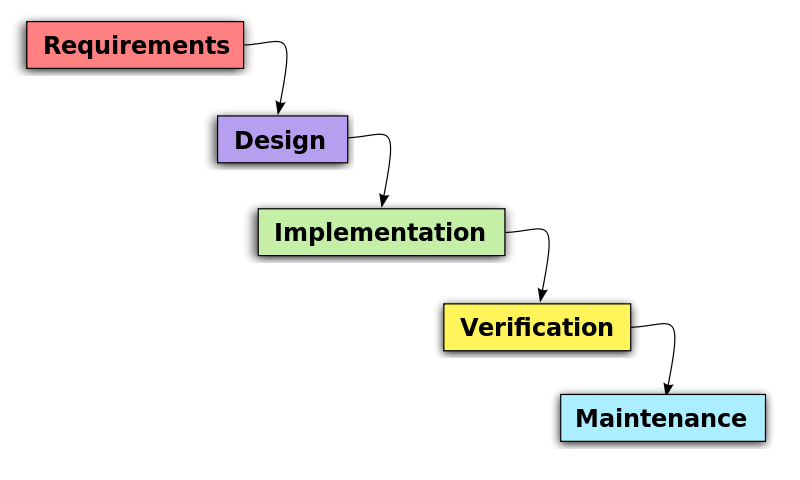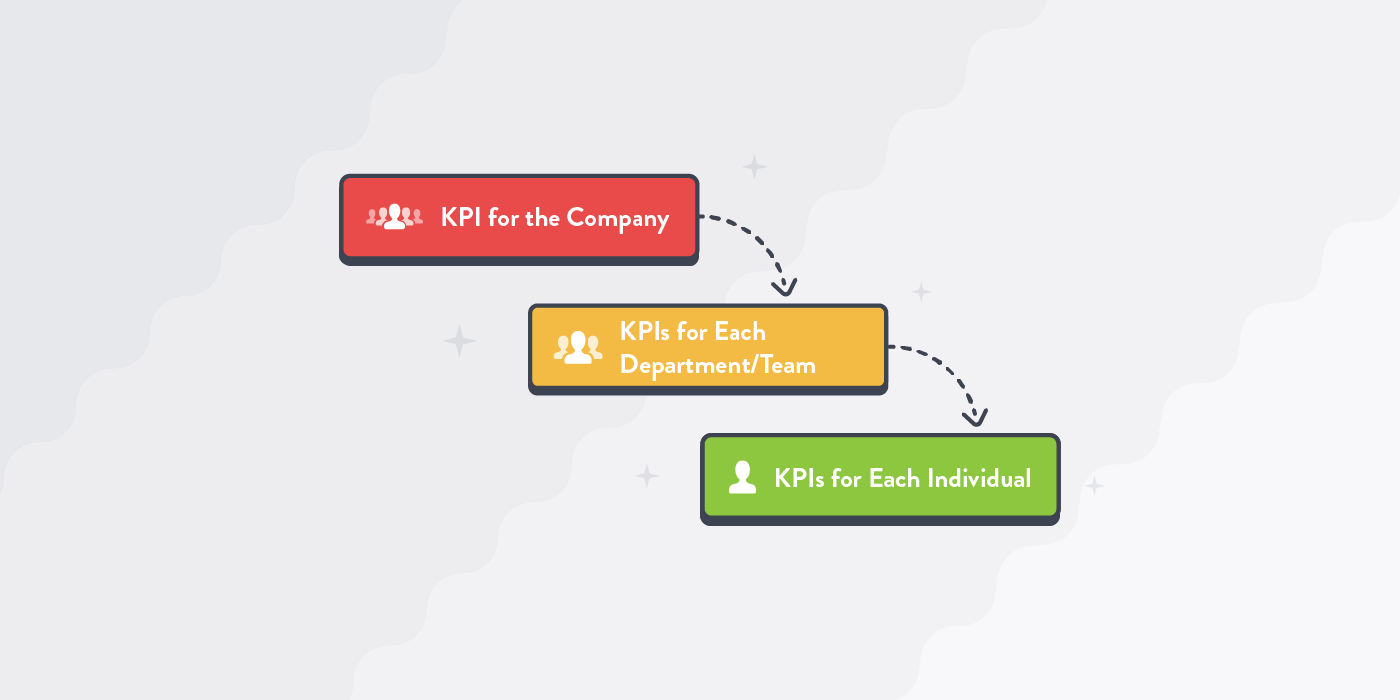As a company grows, it’s easy to lose focus on the primary business objective. Each team ends up vying for company resources to achieve their own priorities or worse, aimlessly working without a goal in mind. Either way, the result can be devastating for a business. But this doesn’t have to happen.
Competing priorities (and the consequent fallout) can be prevented by rallying your employees around a clearly defined, company-wide key performance indicator (KPI). And yes, I know it’s a lot easier to say than to do.
How do you keep everyone focused on a singular goal?
Having a singular goal might sound good in theory, but we need a bit more detail to make it effective in practice. Fortunately, we can adapt the ‘waterfall model’ from software development to make it easier for us to build goal-oriented teams and ultimately a goal-oriented company.
As the name suggests, the waterfall model is a cascading design sequence “seen as flowing steadily downwards through the [various] phases,” according to Wikipedia.
Here’s an example of the waterfall model used in software development.

Source: Wikimedia Commons
Using the Waterfall Model for KPIs
With just a few modifications, the waterfall model can be quite effective for cascading metrics and KPIs throughout your company. As you might guess, the sequence begins by defining your overall company objective.
The Waterfall Model can be applied to business metrics and KPIs.

KPI for the Company (Overall Company Objective)
It can be daunting to select just one metric for the entire company. Start with the basics (churn, retention, MRR if you’re Saas) and learn from there. Choosing one metric doesn’t mean you can never change it - this is where you discover what works for your company and what doesn’t.
It might help to ask these two questions.
- What main objective are you trying to achieve?
- How will you know if you’ve achieved it? (Or what’s the best indicator?)
It’s also worth noting that this metric may change over time as your company grows. Once you have a single KPI for the entire company to focus on right now, waterfall this metric down to the departmental or team level.
At Geckoboard, our overall KPI is monthly recurring revenue (MRR) vs goal, so we’ll use this as an example. Keep in mind that KPIs are most actionable when compared to benchmarks or goals. This is why I’ve added “vs goal” to the various metrics as a reminder to set a target for the KPIs you choose.
KPIs for Each Department/Team
The next step is to identify the supporting metrics specific to each department or team that align with the overall KPI. The following questions can help.
- How does [department/team] help achieve [overall KPI]?
- What are the best metrics (might be several) to know if you’ve achieved it?
Based on your answers for each team, select the most actionable metrics and jot them down. Continuing with our example of MRR as an overall KPI, here are some example supporting metrics broken down by department.
Example Marketing Team KPIs
- Trial signups vs goal
- Number of website sessions vs goal
- Conversion rate (trendline or vs goal)
Example Sales Team KPIs
- Pipeline volume vs goal
- Increase Average purchase value
- Reduce Sales cycle length
- Increase activity per rep
Example Support Team KPIs
- Churn vs goal
- Reduce open support tickets
- Reduce average response time
- Increase customer satisfaction rating
KPIs for Each Individual
Getting down to individual KPIs is the fun part! Each person should be actively improving one or more metrics that support the team KPIs and ultimately the overall company KPI. In this way, every team member can see their contribution to the company’s success and will be much more motivated to achieve the overall goal.
Based on the marketing team metrics listed above, your individual KPIs might include one or more of the following.
Example Content Marketer KPIs
- Increase returning visitors
- Organic search sessions vs goal
- Trial sign-ups from organic search vs goal
Example Social Media Manager KPIs
- Website sessions from social vs goal
- Increase social shares
- Audience reach (social, guest posting, forums, etc.)
Example SEO Manager KPIs
- Organic search sessions and signups vs goal
- Increase conversion rate from organic search to trial
- Increase organic search rankings
- Increase organic search click-through rate
Notice that in some cases the individual metrics may overlap between team members (i.e. organic sessions vs goal). Depending on the structure of your team, it’s likely that two or more people may work to improve the same KPI. That’s great because it encourages collaboration.
Visualize Your Metrics
Now that you’ve successfully used the waterfall model to assign specific KPIs to every person, it’s time to visualize those metrics! Because - let’s get real - if we don’t keep our most important metrics in plain sight, we’ll forget about them and lose focus.
I recommend building dashboards for each level of the waterfall. Here are a few examples as inspiration to create dashboards for your company.
Example SaaS Company Dashboard
Using this waterfall model for KPIs will keep your team goal-oriented and motivated to accomplish your overall objective.
